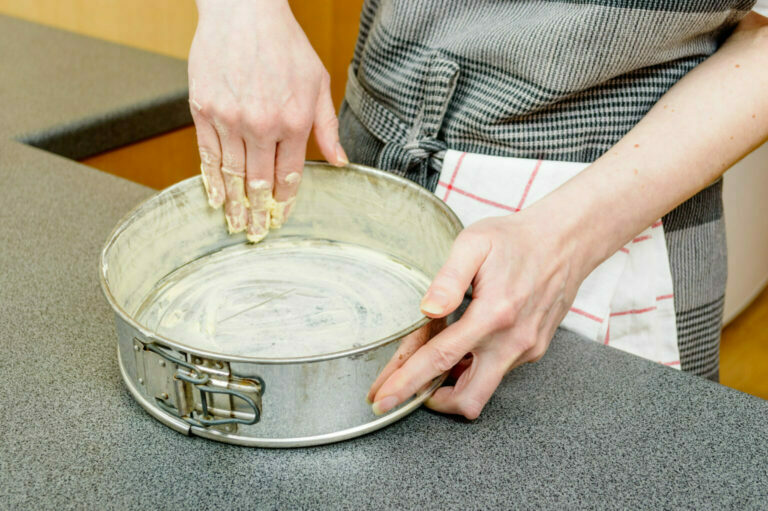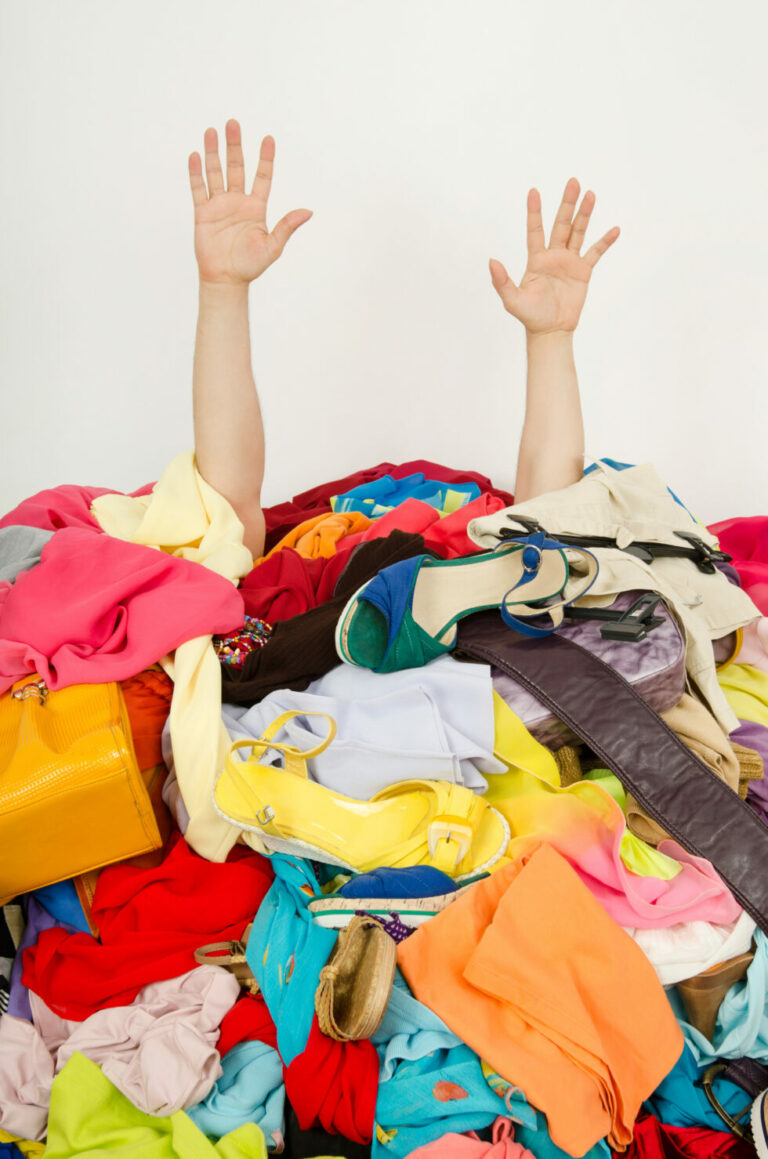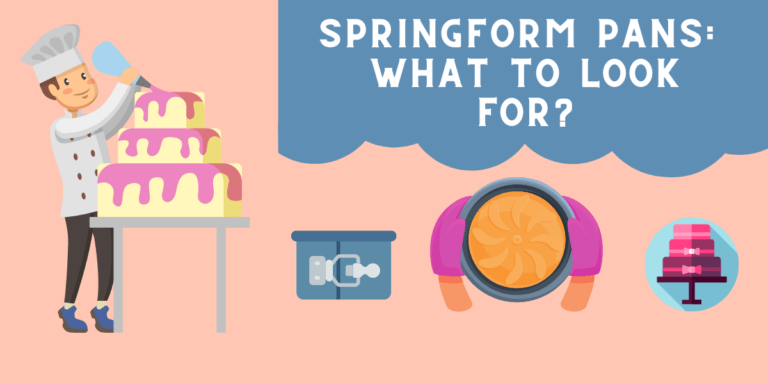Cooking with Silicone
Silicone baking pans have become more popular in recent years than traditional metal or glass bakeware. They are seen as a more modern option, and some people find that they offer certain benefits, such as being nonstick and easy to clean. However, there is a slight learning curve when using them, as they behave differently than traditional pans. Additionally, some people are reluctant to switch from more traditional bakeware because they have been successful with those products.
On the whole, silicone bakeware is a hit or miss with people. Some swear by it because of its nonstick properties and ability to be put in the dishwasher. Others find that their food sticks to the silicone or that it’s difficult to clean. In general, it’s important to know what you’re getting into before using silicone bakeware – just like any other type of baking pan.
Nonetheless, there are a few things to consider before shopping for silicone bakeware. First, manufacturers have been quick to assure buyers that these soft pans will not fold in on themselves or create a mess while baking. To this end, many of them have designed optional or companion racks or ‘sleds’ that provide much-needed stability, especially for the larger pans.
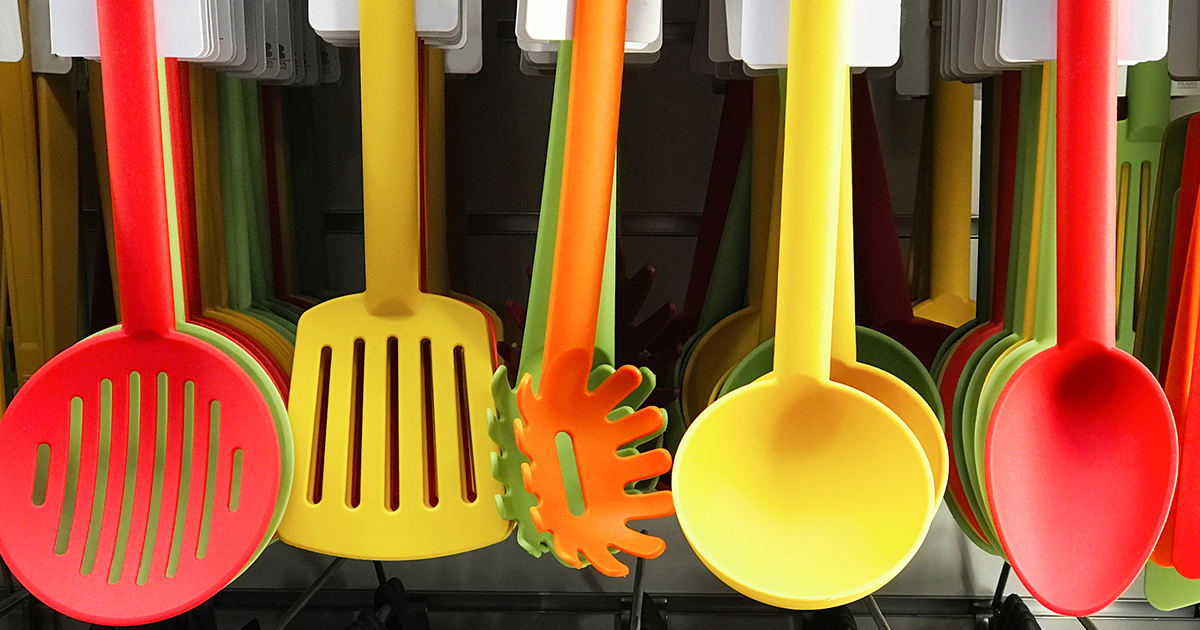
What is silicone kitchenware?
Silicone kitchenware is made of silicone, a synthetic polymer. It is durable, heat-resistant, and nonstick. Silicone kitchenware is safe in the oven, microwave, and dishwasher. It is important to check for fillers before purchasing silicone kitchenware as some cheaper products may not be 100% silicone.
Silicone kitchenware is a popular choice for bakeware because it is an inert material that doesn’t react with food. It is also nonstick, so it’s easy to clean. Silicone can be used at high temperatures without melting, and it doesn’t corrode like some other materials.
Silicone kitchenware is a popular alternative to traditional bakeware. It is non-toxic, safe to use in the oven and freezer, and does not release harmful fumes when heated. Silicone is also FDA-approved for contact with food, making it a safer option than some other materials.
Silicone kitchenware is a great alternative to traditional metal and glass cookware. One downside, however, is that food can get stuck in the tight spaces of the molds. Make sure to clean your silicone molds thoroughly after each use to prevent any bacteria build-up.
Silicone kitchenware is becoming more and more popular as it is a safe material to use with food. Silicone kitchenware that is certified food-grade will not leach any harmful chemicals into your food so that you can cook with peace of mind.
What is it like cooking with silicone tools?
Silicone is a synthetic material that was created in the early 1940s. It is made of silicon, oxygen, and carbon and has various uses. Silicone bakeware is especially popular because it does not warp or lose its shape even when heated to high temperatures.
Silicone kitchenware is made to be heat resistant and freezer safe. This means that you can use it in the oven, microwave, or on the stove without worrying about it melting or warping. Additionally, silicone kitchenware cannot be recycled; however, it is dishwasher safe.
Silicone kitchenware is a type of cookware that is made from silicone, which is a synthetic rubber. It is important to remember to dry silicone cookware before storing it as it can become moldy if left wet. Additionally, silicone cake pans have been known to discolor and become tacky, causing them not to be used as frequently.
On the downside, silicone cookware is often inferior to other materials like aluminum and copper. However, there are some benefits to using silicone kitchen tools. They are generally nonstick, so they’re easy to clean, and they can be used at high temperatures without melting or warping.
What are the popular products for cooking with silicone
Silicone baking mats are a great way to make homemade cookies and crackers. They’re nonstick, so you don’t need to use any cooking with silicone spray, and they’re oven-safe up to 500 degrees Fahrenheit.
The silicone spatula is a great kitchen tool for scrambling eggs in a pan. It’s also good for mixing batters and sauces, and it’s heat resistant up to 500 degrees Fahrenheit.
Silicone kitchenware is becoming more and more popular because it is a safer option than metal. Silicone products are nonstick, making them easier to clean than traditional muffin liners. In addition, silicone is heat-resistant, meaning that it can be used in the oven without any problems.
Although silicone kitchenware is often marketed as a nonstick product, it does not always live up to that claim. Some users have found that food sticks to the silicone and makes cleaning difficult.
Silicone kitchenware is popular for a few reasons: durable, safe to use, and easy to clean. In addition, silicone cookware comes in various fun colors and styles that can brighten up your kitchen. Using silicone products is a great way to go green in the kitchen!
What are the benefits of cooking with silicone?
Silicone cookware is a great alternative to traditional nonstick pots and pans. It is reusable, which means you can save money in the long run, and it does not release toxic fumes when cooking with silicone, making it a healthier option.
Silicone kitchenware is a great alternative to traditional metal and ceramic cookware. It is easy to clean and grease-free.
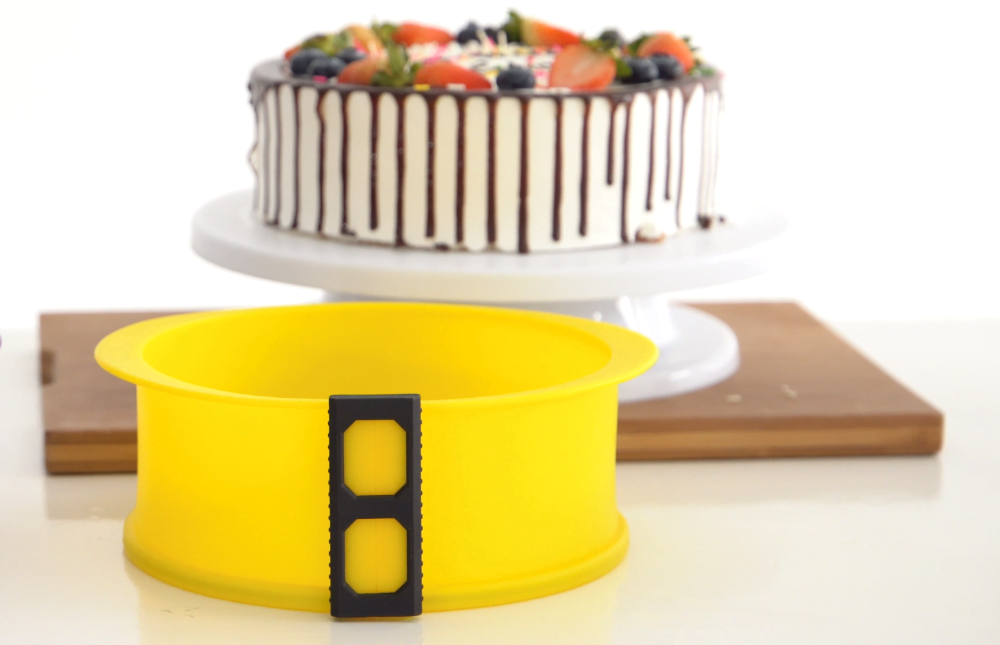
The dangers of cooking with silicone
Silicone cookware is a popular choice for many people because of its durability and nonstick properties. However, there is some concern over the safety of silicone. Some studies have shown that silicone can release toxins when heated, and there have been cases of people being poisoned by silicone cookware. For these reasons, it is important to be aware of the dangers of using silicone cookware and take precautions when cooking with silicone., making it a healthier option. Additionally, silicone cookware is fun and easy for kids to use, helping them learn about cooking.
For one, silicone is easier to use- you can mix and match colors and shapes more easily than other materials. Additionally, silicone is much easier to transport than heavy pots and pans if you move around a lot.
Though there are potential dangers associated with cooking with silicone, they are only reported during high-temperature cooking. When used as directed, silicone cookware is a safe and healthy option for your kitchen.
Though silicone is inert and does not leach chemicals when heated, it can release fumes at very high temperatures. These fumes could potentially be harmful if inhaled over a long period. For this reason, it is best to avoid cooking with silicone cookware at extremely high temperatures.
What is the safety of cooking with silicone?
Silicone cookware is a popular choice for many people because it is durable, nonstick, and versatile. However, there is no confirmed safety of silicone cookware. There are concerns about using silicone bakeware because it can release toxins when heated. For this reason, it is important to choose high-quality silicone cookware that does not contain fillers or binders.
Silicone cookware is a popular choice for many people as it is a safer option than other materials like aluminum. However, some dangers come with using silicone cookware. One way to test if your silicone cookware is pure or not is to twist it- if you see white streaks, there are fillers in the silicone, and it is not food grade. So, make sure to check the purity of your silicone cookware before purchasing it.
The U.S. Food and Drug Administration (FDA) has stated that silicone cookware is safe to use if the temperature does not exceed the recommended limit. In addition, Canada’s health agency, Health Canada, asserts that silicon cookware is also safe for human consumption.
Though the FDA has not found any health concerns with silicone cookware, there are debates on the safety of food-grade silicone. Some people believe that when heated, silicone can release toxins into food. However, there is no definitive proof of this, and most experts say that cooking with silicone is safe.
Though silicone cookware is generally considered safe, some potential dangers come with its use. Namely, the compounds or agents used to help release food after cooking with silicone can be harmful if ingested in large quantities. Additionally, many studies use hyperbolic language and test conditions that don’t match real-life use.
Unfortunately, silicone cookware is not as safe as we once thought. Studies have shown that the leaching of silicone into the food can be harmful, especially when microwaved. With this in mind, it’s important to take care when using silicone cookware and avoid heating food in them.
What kind of cookware material is safe to use with silicone
Silicone cookware is not unsafe to use. There are many variations of silicone cookware on the market, and it is important to do your research to find quality silicone products.
Silicone is a popular cookware material for its nonstick and heat-resistant properties. However, there have been concerns about the safety of silicone cookware. Some people have reported that their silicone cookware has turned white after use, which may indicate fillers in the silicone. To test for purity, twist the silicone to see if white streaks appear. If they do, the silicone likely contains fillers and should not be used.
Health Canada has confirmed that pure silicone is safe to use with food. The United States Food and Drug Administration (FDA) also agrees, classifying silicon dioxides as generally recognized as safe. This means that cookware made of silicone is a safe option for those who want to avoid chemical coatings or aluminum.
Some people are concerned about the leaching of chemicals from silicone cookware. However, this is still a debated topic. The concern comes from some studies’ hyperbolic language that doesn’t match real-life conditions. For example, one study found that a pan coated with silicone released high levels of platinum when heated to 750 degrees Fahrenheit. However, this level is not achievable in a home kitchen and is more typical of an industrial setting. In addition, other studies have found that silicone does not leach chemicals into food at all.
In addition, silicone cookware is typically made with a food-grade silicone material coated with a food-approved compound or agent. This will ensure that no harmful chemicals are released into your food and make the cookware easier to clean.
How to cook with silicone cookware
Silicone is a synthetic rubber that is created by bonding silicon and oxygen. It is often used in cookware to withstand high temperatures without melting or warping. Additionally, silicone bakeware can contain other materials like carbon, making it nonstick and easy to clean.
Silicone kitchenware is a popular choice for many people as it is heat-resistant and doesn’t biodegrade. In addition, silicone kitchenware can be used up to 428 degrees Fahrenheit or 220 Celsius without melting or warping.
To ensure the longevity of your silicone kitchenware, it is important to dry them properly after each use. Silicone is a porous material and can easily trap moisture, which will cause it to break down over time. Ensure you towel off any excess water and air dry completely before storing.
How to clean tools after cooking with silicone
To clean silicone bakeware, it is best to grease the pan before using it. This will make it much easier to clean when you are finished. If you use a small cup, greasing the sides will help keep the batter from sticking.
To clean silicone bakeware, spray nonstick cooking spray on cups with paper baking cups inside them. The cooking spray will help the baked-on food release easily. After letting the bakeware cool, please put it in the dishwasher or use hot water and soap to scrub it clean.
Safety tips when cooking with silicone
Yes, cooking with silicone is safe. However, it is important to follow the safety tips below to avoid any potential problems:
- Do not heat silicone above a certain temperature threshold as it can release harmful toxins.
- Make sure that all silicone products are food grade and BPA-free.
- Keep silicone products away from open flames and high heat areas.
RubberCal has an article on what it means to be FDA food-safe rubber. To ensure the safety of your food, make sure that any silicone kitchenware you use is made of FDA food-safe rubber.
Frequently asked questions: Silicone bakeware
Silicone is a synthetic rubber that is made of bonded silicon and oxygen. It is heat-resistant and safe for oven and freezer use. Silicone bakeware is becoming more popular due to its many benefits, including being nonstick, flexible, and easy to clean.
Silicone bakeware is a popular choice for cooks because it doesn’t change the flavor or release any odors that might affect the food quality. Additionally, silicone has low toxicity and thermal stability, meaning that it can be used at high temperatures without breaking down.
Silicone is a popular material for bakeware because it is durable, reusable, and easy to clean. Silicone muffin tins are preferable to paper muffin tins because they do not warp or stick, and the silicone does not release toxins when heated.
Silicone bakeware is a popular alternative to traditional metal bakeware. Silicone is nonstick, meaning that baked goods do not stick to the sides of the pan, and it is oven and dishwasher safe. Additionally, silicone is a flexible material, allowing easy removal of baked goods from the pan. One downside of silicone bakeware is that it cannot be recycled; however, it can be composted. Another downside of silicone bakeware is that it may contain perfluorooctanoic acid (PFOA), which is toxic to the environment.
Is cooking with silicone pans good?
Silicone cookware is generally considered safe to use, but there are some potential risks. For example, silicone can be pure or impure due to the fillers and binders used in its manufacturing process. If it contains impurities, then it may not be suitable for cooking or baking because of the potential health hazards associated with those chemicals. Health Canada maintains that silicone cookware is safe to use, but you should speak with a health professional if you have any concerns.
The FDA has a position on silicone cookware in that silicon dioxides are generally recognized as safe. Silicone bakeware is 100% pure silicone and has not been studied by the FDA since the 1980s. There is some debate on leaching chemicals that coat food-grade silicone cookware, but no concrete evidence supports this claim.
People are asking if silicone bakeware is good for cooking. The answer to this question is not so straightforward. Silicone bakeware has a lot of hyperbolic language surrounding it; people claim that it never needs greasing, releases food easily, and can go from freezer to oven. However, most of these claims have not been tested under rigorous conditions. Most tests on silicone bakeware show that the pans need grease and release food with difficulty- even when following the manufacturer’s instructions to the letter.
Is silicone dishwasher safe or not?
Silicone dishwasher safe is a debatable topic. Some say that the silicone releases too much grease and becomes difficult to clean, while others find that they are easier to clean than traditional metal muffin cups.
First and foremost, silicone pans don’t brown food as well as metal or glass pans do. Secondly, for muffins, cookies, and other baked goods that you would like to have a crispy outside and a soft inside, it’s better to use paper liners instead of relying on the nonstick surface of silicone pans.
The “nonstick” claim is often a bit of a letdown with silicone bakeware because it doesn’t always work as well as people would hope. The nonstick surface can be difficult to achieve and maintain on three-dimensional products. However, baking mats are still my friend for most things unless I start to worry about toxicity levels.
How do you clean and care for a silicone baking spatula?
Silicone kitchenware can be cleaned by soaking in warm water for a few minutes. Avoid using abrasive chemicals or tools to clean them, which can damage the silicone material.
Silicone baking utensils are a great investment. They are easy to clean- just dishwasher safe, but it is best to hand wash them with mild soap for longevity’s sake. Also, food can be easily removed from silicone molds using these utensils- so you’ll never have to worry about baked-on messes again!
Here are some tips on cleaning and caring for your silicone bakeware: if there is a sticky residue left on the utensil, you can remove it with water and a mild detergent. Additionally, boiling the utensils and bakeware for a few minutes will help to remove any soapy taste.
Here are some tips on cleaning and caring for your silicone baking spatula: First, you must wash your baking molds with water and detergent before sprinkling the baking soda on the remaining greasy areas. Second, if there is a soapy taste, it can be removed with vinegar or baking soda. Finally, store your silicone baking spatula in a dry place to prevent bacteria build-up.
Some users have reported a white residue on their silicone bakeware. This is caused by calcium sulfate that has calcified on the silicone. The best way to clean this off is with vinegar and water. You can also use a baking soda paste or buy a specialized silicone cleaner. To prevent this from happening, make sure you dry your bakeware thoroughly after each use.
- The Ultimate Decluttering Checklist: The [15] things you need to get rid of - April 14, 2023
- The Best Laundry Basket & Organizer: Find the best hamper for you! - February 2, 2023
- Cooking With Silicone: Is Silicone Cookware And Bakeware Safe For Use? - August 23, 2021

